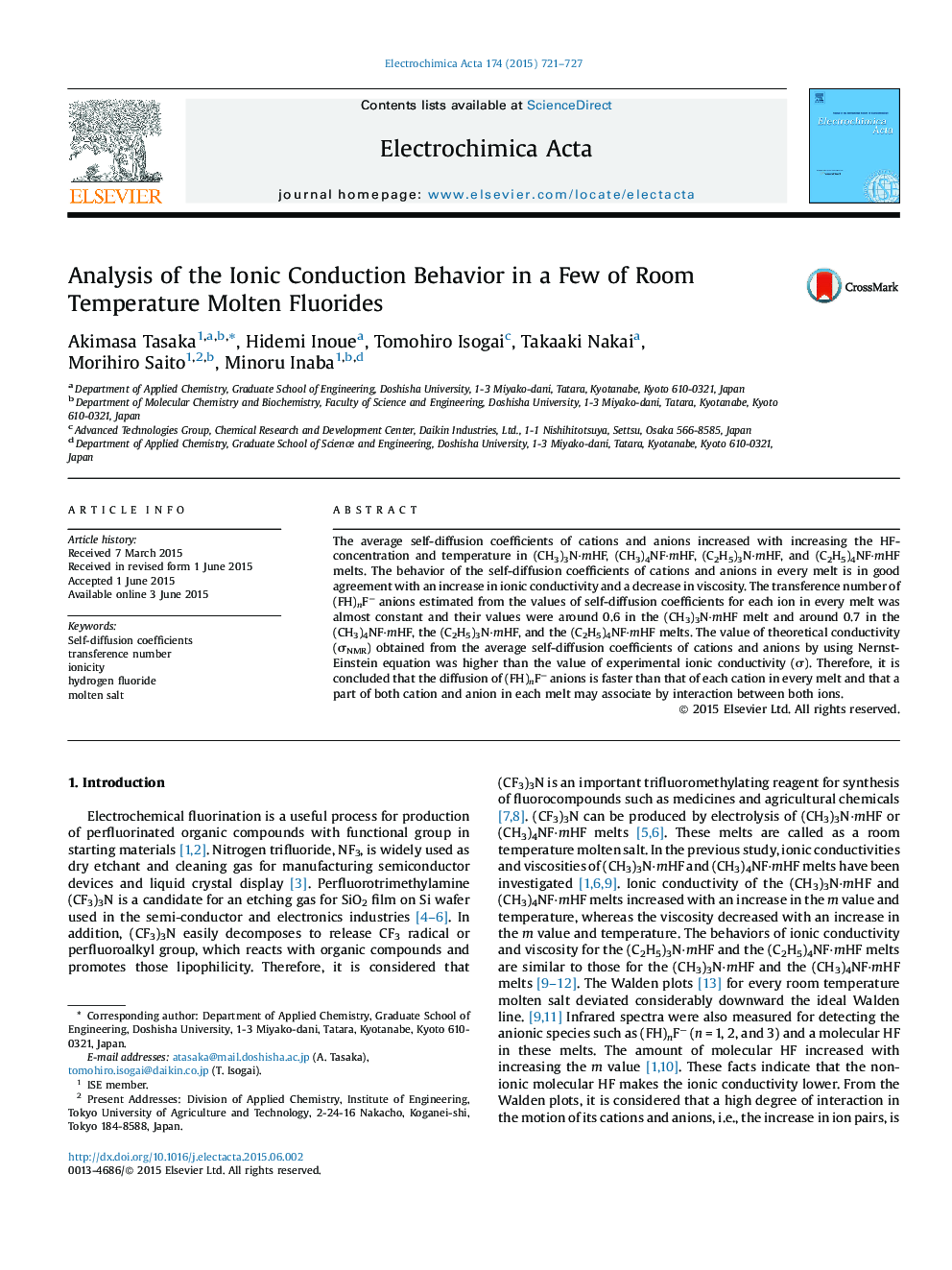| Article ID | Journal | Published Year | Pages | File Type |
|---|---|---|---|---|
| 6611279 | Electrochimica Acta | 2015 | 7 Pages |
Abstract
The average self-diffusion coefficients of cations and anions increased with increasing the HF-concentration and temperature in (CH3)3N·mHF, (CH3)4NF·mHF, (C2H5)3N·mHF, and (C2H5)4NF·mHF melts. The behavior of the self-diffusion coefficients of cations and anions in every melt is in good agreement with an increase in ionic conductivity and a decrease in viscosity. The transference number of (FH)nFâ anions estimated from the values of self-diffusion coefficients for each ion in every melt was almost constant and their values were around 0.6 in the (CH3)3N·mHF melt and around 0.7 in the (CH3)4NF·mHF, the (C2H5)3N·mHF, and the (C2H5)4NF·mHF melts. The value of theoretical conductivity (ÏNMR) obtained from the average self-diffusion coefficients of cations and anions by using Nernst-Einstein equation was higher than the value of experimental ionic conductivity (Ï). Therefore, it is concluded that the diffusion of (FH)nFâ anions is faster than that of each cation in every melt and that a part of both cation and anion in each melt may associate by interaction between both ions.
Related Topics
Physical Sciences and Engineering
Chemical Engineering
Chemical Engineering (General)
Authors
Akimasa Tasaka, Hidemi Inoue, Tomohiro Isogai, Takaaki Nakai, Morihiro Saito, Minoru Inaba,
